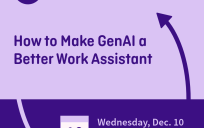 (Editor’s note: You can find part 1 of this series here.)
(Editor’s note: You can find part 1 of this series here.)
How can governments improve digital engagement?
To fully harness the potential of data and technology, U.S. governments need to overcome the concerns many citizens have about going online to conduct business. The digital divide poses significant risks for the future of the nation if certain segments of the population are left behind.
To that end, governments will need to adopt data-driven approaches to better understand citizens’ needs, target services proactively, evaluate complex public policies and deliver better outcomes for citizens in a more cost-effective way.
Government entities can also do more to clarify the benefits of sharing data and show citizens that it will be used in responsible ways. In the EY Global Survey for example, while 52% of global respondents said they were willing to use personal data to help track and prevent disease, only 42% of U.S. respondents said they were willing to share this data. At the same time, nearly 25% did not have a stated position on whether their personal data should be used to help public health initiatives, which means that governments still have an opportunity to influence public opinion and improve acceptance of digital technology.
In addition, while many Americans favor digital technologies for accessing government services, they also prefer options like phone and in-person. As a result, governments should avoid a “digital by default” approach and offer multiple channels to provide full and equal access. The survey also found greater acceptance for digital services when technology enables interaction between people.
At the same time, a growing percentage of Americans, particularly the young and affluent, are more comfortable with technology. To meet their expectations, agencies may want to consider the following:
- Setting up unique digital IDs that allow citizens to gain easier access to a range of services through multiple digital channels.
- Building smart portals and mobile apps that provide one-stop access to multiple government services, as well as push timely messages and updates.
- Establishing integrated digital platforms that enable data sharing across different government systems, to create a complete view of the citizen and organize services around people’s needs and life events.
Clearly, there is no one-size-fits-all approach for providing improved access to digital services in the U.S. While taking steps to close the digital divide may help, for the immediate future, agencies will need to provide a broad range of options to provide access to all citizens.
Citizen Personas
As we analyzed the data, we defined seven distinct citizen personas: Diligent Strivers, Capable Achievers, Privacy Defenders, Aspirational Technophiles, Tech Skeptics, Struggling Providers and Passive Outsiders.
Each group interacts differently with technology and digital services, with each holding different lessons and challenges for governments seeking to better engage with all citizens. A one-size-fits-all approach won’t work for all the personas. That means governments will need to tailor outreach to meet the needs of not only the most technically sophisticated citizens, but also those who for various reasons struggle to access online services.
- Capable Achievers (20%) are independent, successful and satisfied with their life. They are pragmatic technophiles who embrace digital innovation. They trust governments to use their data appropriately but tend to worry about it getting into the wrong hands.
- Privacy Defenders (19%) are older, independent and typically comfortably off. They value technology and the benefits it provides but exhibit more caution than other tech-friendly groups when it comes to sharing personal data with government or private companies.
- Tech Skeptics (17%) are older, often on lower incomes and relatively dissatisfied with their lives. They are distrustful of government and remain skeptical about the benefits of technology. They tend to oppose data sharing, even when there is a clear, compelling reason for doing so.
- Aspirational Technophiles (15%) are younger, well-educated city dwellers. Motivated by success and new opportunities, they incorporate technology and data into every facet of their lives. They are excited by the potential for new digital innovations to empower people and improve society.
- Diligent Strivers (13%) are young, proactive self-improvers keen to get on with life and get ahead. They expect seamless digital government services to help them achieve their aims and are comfortable sharing their data with governments. They believe strongly in equal opportunities for all.
- Passive Outsiders (10%) have lower levels of income and education. They are detached from the connected world around them and are generally reluctant to embrace change. They are relatively ambivalent on data sharing but tend to feel the risks outweigh the benefits.
- Struggling Providers (6%) are younger and tend to be have low-paid, less secure occupations. They are above-average users of welfare services and ambivalent toward technology. This is often due to a lack of access and the necessary tools for integrating it into their daily lives.
Chris Estes is the Finance, Operations & Technology Leader for the US SLED at EY. He served as North Carolina’s Secretary and CIO for the Department of Information Technology. As a member of the governor’s cabinet, he provided oversight of information systems projects, managed IT services for state agencies, local governments, and schools. He was an Executive Committee Director for the National Association of State Chief Information Officers (NASCIO). He also chaired NASCIO’s National Innovation Community. He is a recipient of North Carolina Order of the Long Leaf Pine and several CIO of the Year Awards.
Interested in becoming a Featured Contributor? Email topics you’re interested in covering for GovLoop to [email protected]. And to read more from our summer/fall 2021 Cohort, here is a full list of every Featured Contributor during this cohort and a link to their stories.





Leave a Reply
You must be logged in to post a comment.